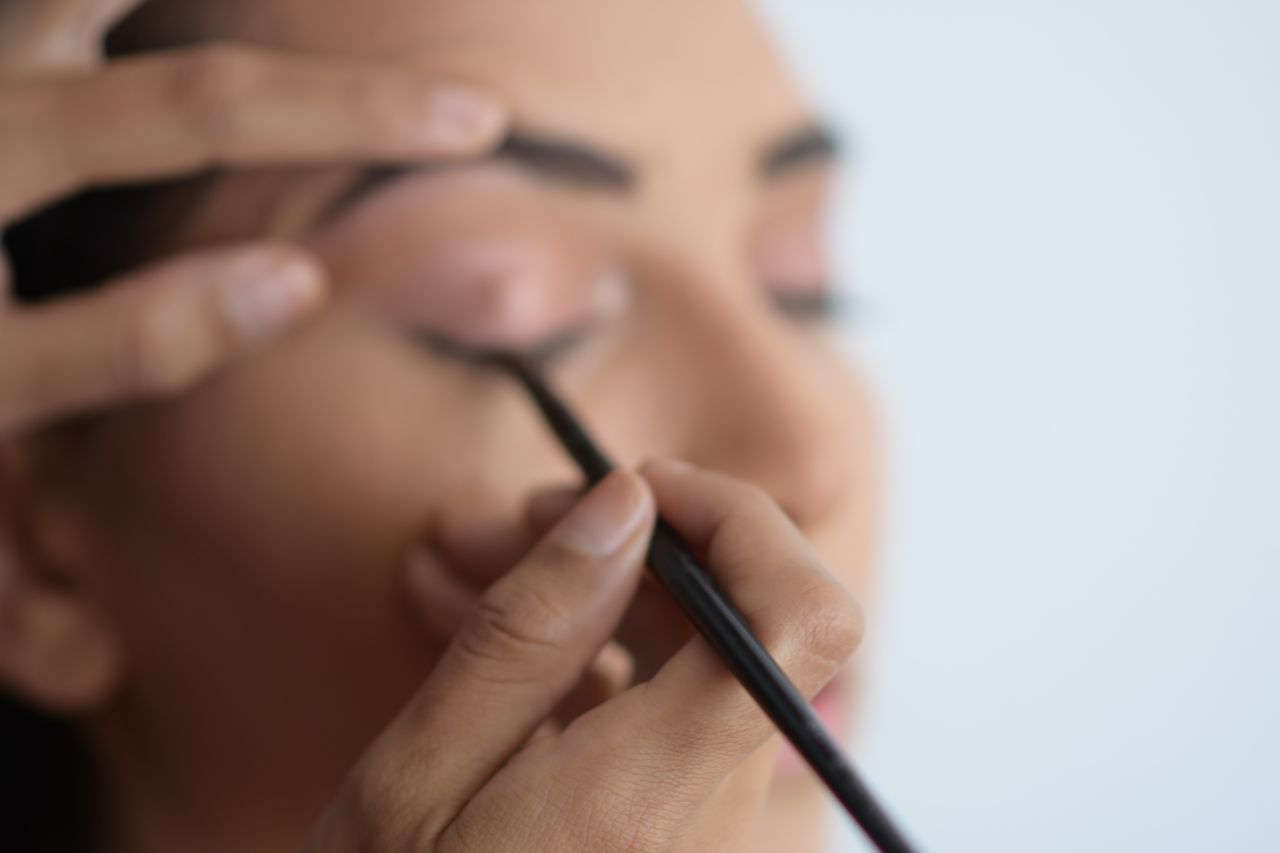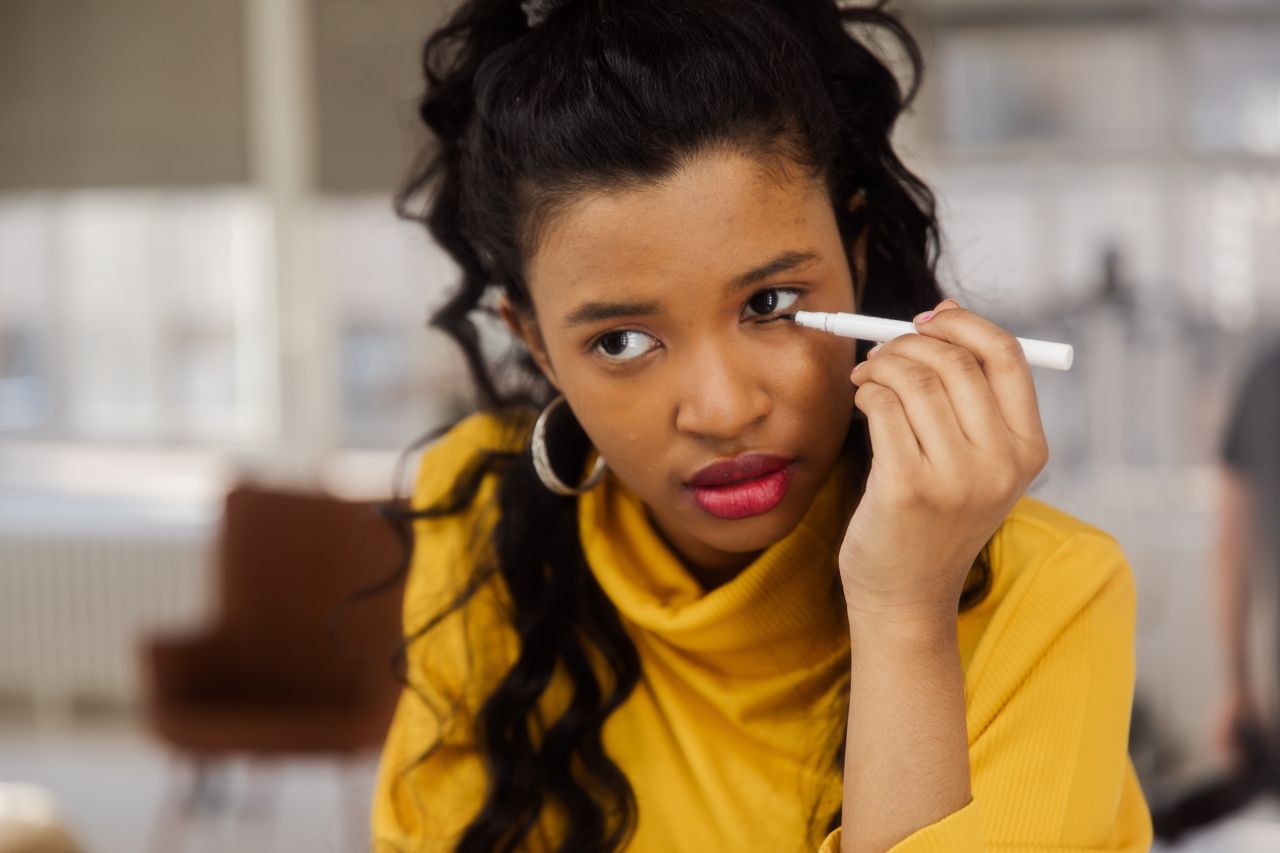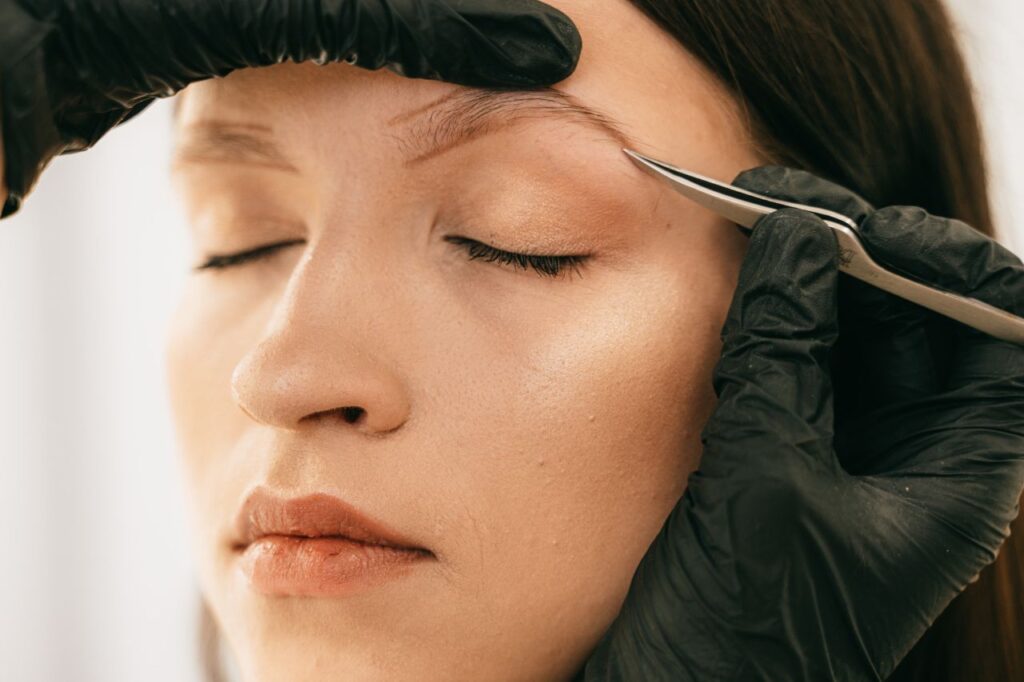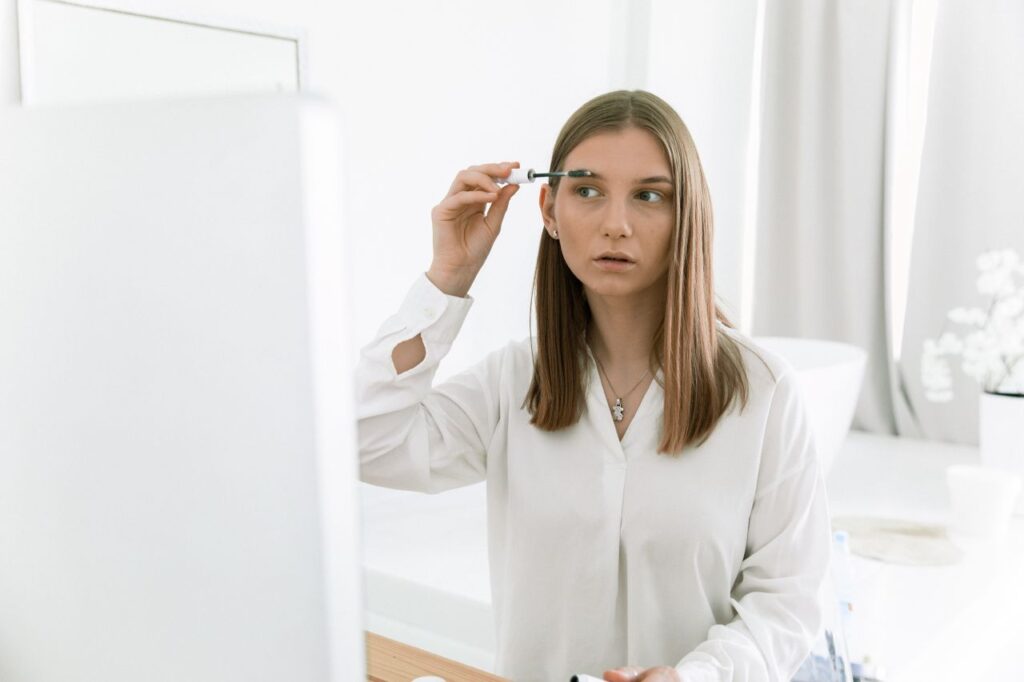When you have permanent eyeliner, your face is always prepared for last-minute social engagements. However, you should be aware that the healing period following permanent eyeliner application may be lengthy. Therefore, after getting permanent eyeliner, taking care of your eyelids is crucial for maintaining good eyelid health and avoiding infections.
If the treatment for permanent eyeliner is performed by a professional who understands what they're doing, the recovery time may be minimal. Always go with a licensed expert who has access to clean equipment and supplies and employs proper procedures.
Is Aftercare For Permanent Eyeliner Complicated?
According to many permanent makeup practitioners, the aftercare instructions for permanent eyeliner are the most straightforward of all permanent makeup operations. This is particularly true with regard to eyeliner.
Permanent eyeliner aftercare comes in three different forms and is recommended based on your skin type. When it comes to applying an aftercare ointment, the recommendations vary. You should strictly adhere to all three aftercare procedures, as they are all quite easy.
How Long Does Permanent Eyeliner Take To Heal?
Permanent eyeliner has a healing time of four to six weeks. After it has been applied, the majority of the necessary aftercare will typically take place approximately one and a half weeks later. Throughout this phase, you'll encounter scabbing and flaking.
You may also need to clean and hydrate the area, depending on the advice of your makeup artist. Your understanding of the aftercare requirements at each stage of your recovery process will be much enhanced by knowing what to expect at those stages.
What Are The Stages Of Healing For Permanent Eyeliner?
Your wound's healing process may look slightly different from someone else's because everyone's skin reacts to treatment in its unique way. Thankfully, the stages people go through after surgery remain very similar across the board. You'll find a detailed description of each stage and what to anticipate for it below. Our exclusive range of microblading services will help you in eyebrow microblading, feathering or hair stroke eyebrow tattooing procedures.
Days 1-2
Your eyes may appear swollen after you've done your service. Your healed permanent eyeliner will look much more subtle and subtle. Feelings of constriction and puffy eyelids upon waking are expected throughout this time. Your eyes may get red or watery, and you may find that light bothers them.
After a few days, you should seek immediate medical assistance if your eyes continue to enlarge, appear bloodshot, or feel unpleasant.
Days 3-5
As your skin starts to recover, you can see some flaking around this time. The eyeliner will start to get less opaque and can look more diminutive than it did previously. It's nothing to worry about; this is natural when the new skin begins to grow.
Days 6-10
At this stage, the colour begins to take on its definitive appearance. What to do next will depend on your makeup artist's advice and how well your skin is healing.
Healing time is individual and can range from a few days to a few weeks. The flakes can last longer than five days but can also stop considerably sooner. If something doesn't feel right, pay attention to your physical sensations, watch for warning signs, and make an appointment with a doctor immediately.
What Are The Basic Aftercare Rules For Permanent Eyeliner?
The following is a list of the most fundamental guidelines for the aftercare of permanent eyeliner that you should constantly keep in mind, regardless of the aftercare programme that was given to you:
- Never scratch, rub, or touch the treated area. It's easily damaged, and the pigment can be peeled off with the wrong approach. Clean the area gently with a q-tip soaked in sterile water.
- During the next 15 days, avoid wearing eye makeup, particularly mascara.
- Keep out of the sun.
- It would be best to stay out of places where you could overheat, like saunas, steam rooms, fitness centres, and swimming pools.
- You should wait at least four weeks before getting a facial, Botox, or other cosmetic treatment.
- Try to avoid sleeping on your face, and always make sure to use a fresh pillowcase.
- During the time that you need to care for your permanent eyeliner, you should not wear contact lenses. Get a fresh set of contacts, or start using glasses instead.
Check out our range of eyeliner tattoo services to help with your problems.
Dry Healing Vs. Wet Healing Vs. Combination Healing
Depending on your situation, you can take one of several approaches to recovery. Since everyone's skin is unique, most strategies use a combination of approaches. Your makeup artist will suggest the ideal products for you to use. However, there are primarily three approaches, which you can read below.
1. Dry Healing
When it came to aftercare, dry healing was the treatment of choice before wet healing became prevalent. Those who have oily skin can benefit greatly from using this strategy.
The first few days of using this procedure include constant cleaning of the treated area throughout the day. Dust and lymph fluid can be removed using a cotton pad or swab dipped in water. To prevent introducing too much moisture, some painters advise just blotting away the excess fluids.
If you want your eyes to recover properly and with little scabbing, you need to rinse off fluids periodically. The next step in the healing process is to avoid getting it wet. Using this procedure will result in scabbing. Do not try to remove it by picking at it or scratching at it. Let it fall off naturally if it must.
As little maintenance is required, this approach is ideal for those with busy schedules. However, scabbing will develop, and the final colour may appear uneven.
DAYS 1 & 2: Every couple hours, wipe the area with a cotton dap dipped in water to remove fluid and dust.
DAYS 3 – 10:The area should not be damp. Please wait for the scabs to fall off before applying anything to the treated area.
2. Wet Healing
Today's makeup artists often recommend the wet healing method. Just like with dry healing, you'll need to keep the area clean all day after your session while using wet healing.
A healing gel is applied following the cleansing process. Makeup artists typically provide these or suggest ones they think you might like. Spread it out in a thin coating that completely covers the surface. Makeup artists can advise on how often the area needs to be cleaned as it heals. This can be as infrequent as once a day or as frequent as many times a day.
You will proceed with the cleaning process by gently wiping the area with water or a mild cleanser. When the affected area has been washed and patted to dry, you will proceed with applying the gel as directed.
Using this technique, you can avoid scabbing and achieve a uniform colour application. However, there are many more steps involved in moist healing than dry. Your aftercare materials may also need to be close to reach all day.
DAY 1: You should apply a thin coating of the aftercare ointment and clean the area with a damp cotton pad every couple of hours to eliminate the lymph.
DAYS 2 – 10: After the procedure, the affected area should be washed with tepid water and a mild cleanser (if instructed to do so), and then a very thin coating of the specified aftercare ointment should be applied.
3. Combination Healing
This technique incorporates wet and dry approaches to the healing process. The area will be kept dry throughout the first several days of this procedure, aside from while you're cleaning. Then, following your artist's instructions, you should clean the area and apply healing gel twice daily for the next week.
DAYS 1 – 3: Avoid getting the area wet and instead use a cotton pad dipped in lymph fluid to clean it from lymph fluid occasionally.
DAYS 4 – 10: Use lukewarm water (and a delicate cleanser if instructed) to wash the area, and then apply a little amount of the aftercare ointment. Some artists recommend applying the ointment whenever the area feels tight and itchy rather than sticking to a strict schedule.
NOTE: These are only the high points of the three most typical aftercare procedures for eyeliner tattoos. Your artist may recommend a different routine. Always utilise the items your artist suggests, as they have had the opportunity to evaluate your skin and can make educated predictions about what will perform best.
Why Do I Require The First Touch-Up?
If any of the pigment has flaked off or the curve of your liner needs to be tweaked in any way, your artist can do it during your scheduled touch-up appointment. Now is the time to voice any issues and request changes. The purpose of these follow-up visits is to show them the final result now that you've healed completely.
The following are some general recommendations for caring for your eyes after getting permanent eyeliner. After getting permanent eyeliner done, it's advisable to consult the makeup artist who did the job for tips on best-taking care of your new look. Their advice is specific to you and the information you've given them.
It would be best to visit a skilled professional when the work is done close to the eyes. As an added bonus, a talented artist may offer advice and guide you through recovery.
What Should You Avoid Doing After Getting Permanent Eyeliner?
If you want to avoid any issues with your permanent eyeliner, you should avoid the following for a few days: Check out eyebrow feathering page which has everything you might need near you.
- Stay away from workouts that will leave you drenched in perspiration.
- Don't scratch or rub the spot.
- No long, hot showers for at least ten days!
- Avoid scarring and colour loss by letting scabs fall off on their own.
- Stay out of the sun for at least four weeks.
- Avoid irritation and infections by not sleeping on your face for ten days.
- It's best to wait a week before touching up the area with makeup.
- Over the next ten days, avoid hot baths and swimming face down.
- During the next four weeks, avoid Botox, chemical peels, microdermabrasion, and facials.
How Should I Care For My Eyes After Getting Permanent Eyeliner?
Keeping your eyes healthy involves keeping the eye area clean, keeping your eyes out of direct sunlight, and eventually adhering to the aftercare recommendations provided by your makeup artist. In addition, to prevent the spread of bacteria, you should always use fresh supplies and throw away outdated ones. More explanation is provided below:
- Maintaining a clean environment around the treated area is essential for warding off infections and promoting healing.
- If you've been instructed to use a healing gel, keep doing so.
- To minimise swelling in the first few days, it is recommended to use disposable ice packs and to sleep with your head elevated.
- Before going outside, protect your eyes by using sunglasses or a hat.
- When you can, put on some new eye shadow. As a result, you reduce the risk of spreading germs from your used cosmetics.
- If you want to reduce your risk of getting sick, try using a fresh pillowcase.
- Replace your contact lenses every three months to keep from getting sick.
FAQs About Permanent Eyeliner
During the healing process after the procedure, avoid wearing mascara and other eye makeup. Using brand-new mascara after at least seven days is advisable to protect your eyes from infections or further complications.
Yes. Of course, you can shower after the procedure, but you need to limit your shower time to 3-5 minutes max. and avoid exposing the eyelid area to too much steam. Also, avoid showering with hot water and keep your face dry. Just wash it at the end of the shower.
Yes, it can. Even while getting rid of a cosmetic eyeliner tattoo with modern medicine and technology is possible, doing so is a painful, pricey ordeal. It might not be easy to get rid of the pigment sometimes. If not done properly, there is also a significant risk to your eyes and the skin around your eyes.
Most makers of pigments have abandoned the old-fashioned use of green, violet, and navy as eyeliners to recommend dark brown, brown, black, or black instead. Dark brown or brown-black was a colour that was frequently used to employ, but these days you try to stay away from them whenever you can. Browns are a significantly weaker hue and fade much quicker than other colours.
In two to three days, the liner's thickness will be decreased to the required level, and as the swelling goes down, the liner's surface will become more even. As the healing process moves forwards, the hue will become less intense.
Finally, during three to four weeks, full recovery will be achieved. After that, your final colour and shape will be evaluated, and any required adjustments will be made.
Conclusion
Permanent eyeliner healing takes four to six weeks, with most aftercare happening 1.5 weeks following the treatment. The easiest permanent makeup procedure is eyeliner aftercare, which depends on skin type. Your eyes may be swollen after your service, but the permanent eyeliner will heal to a more natural and subtle look. However, they may experience chest tightness, swollen eyelids, and light sensitivity. See a doctor if your eyes are still puffy, bloodshot, or painful a few days after therapy. Avoid scratching, rubbing, and touching the treated area.
Wet healing involves cleaning the wound with a damp cotton pad every two hours and applying a small amount of aftercare ointment. These are three common eyeliner tattoo care methods. For the next week, wash the area twice with lukewarm water and a mild cleaner and apply a thin coating of the suggested aftercare ointment. Permanent eyeliner artists can advise on maintenance. For example, your artist can repair flaky pigment or an unattractive liner shape at your next touch-up.
To protect your investment after permanent eyeliner, avoid the following. Avoid hot showers and swimming facedown; avoid Botox, chemical peels, microdermabrasion, and facials; use disposable ice packs and sleep with your head raised; letting scabs come off prevents scarring and colour loss; avoid sunlight for four weeks; Wait a week before applying makeup; clean the treatment area; use sunglasses to protect your eyes;
Content Summary
- When you have permanent eyeliner, your face is always prepared for last-minute social engagements.
- However, you should be aware that the healing period following permanent eyeliner application may be lengthy.
- Therefore, after getting permanent eyeliner, taking care of your eyelids is crucial for maintaining good eyelid health and avoiding infections.
- If the treatment for permanent eyeliner is performed by a professional who understands what they're doing, the recovery time may be minimal.
- According to many permanent makeup practitioners, the aftercare instructions for permanent eyeliner are the most straightforward of all permanent makeup operations.
- Permanent eyeliner aftercare comes in three different forms and is recommended based on your skin type.
- Permanent eyeliner has a healing time of four to six weeks.
- Your understanding of the aftercare requirements at each stage of your recovery process will be much enhanced by knowing what to expect at those stages.
- Thankfully, the stages people go through after surgery remain similar across the board.
- You'll find a detailed description of each stage and what to anticipate for it below.
- After a few days, you should seek immediate medical assistance if your eyes continue to enlarge, appear bloodshot, or feel unpleasant.
- As your skin starts to recover, you can see some flaking around this time.
- It's nothing to worry about; this is natural when the new skin begins to grow.
- What to do next will depend on your makeup artist's advice and how well your skin is healing.
- The following is a list of the most fundamental guidelines for the aftercare of permanent eyeliner that you should constantly keep in mind, regardless of the aftercare programme given to you: Never scratch, rub, or touch the treated area.
- Clean the area gently with a q-tip soaked in sterile water.
- During the next 15 days, avoid wearing eye makeup, particularly mascara.
- Try to avoid sleeping on your face, and always make sure to use a fresh pillowcase.
- During the time that you need to care for your permanent eyeliner, you should not wear contact lenses.
- Depending on your situation, you can take one of several approaches to recovery.
- The first few days of using this procedure include constant cleaning of the treated area throughout the day.
- If you want your eyes to recover properly and with little scabbing, you need to rinse off fluids periodically.
- The next step in the healing process is to avoid getting it wet.
- DAYS 1 & 2: Every couple hours, wipe the area with a cotton dap dipped in water to remove fluid and dust.
- Please wait for the scabs to fall off before applying anything to the treated area.
- Today's makeup artists often recommend the wet healing method.
- Just like with dry healing, you'll need to keep the area clean all day after your session while using wet healing.
- Makeup artists can advise on how often the area needs to be cleaned as it heals.
- You will proceed with the cleaning by gently wiping the area with water or a mild cleanser.
- This technique incorporates wet and dry approaches to the healing process.
- Then, following your artist's instructions, you should clean the area and apply healing gel twice daily for the next week.
- If any of the pigment has flaked off or the curve of your liner needs to be tweaked in any way, your artist can do it during your scheduled touch-up appointment.
- Now is the time to voice any issues and request changes.
- The purpose of these follow-up visits is to show them the final result now that you've healed completely.
- The following are some general recommendations for caring for your eyes after getting permanent eyeliner.
- After getting permanent eyeliner done, it's advisable to consult the makeup artist who did the job for tips on best-taking care of your new look.
- It would be best to visit a skilled professional when the work is done close to the eyes.
- If you want to avoid any issues with your permanent eyeliner, you should avoid the following for a few days:
- Avoid irritation and infections by not sleeping on your face for ten days.
- It's best to wait a week before touching up the area with makeup.
- Keeping your eyes healthy involves keeping the eye area clean, keeping your eyes out of direct sunlight, and eventually adhering to the aftercare recommendations provided by your makeup artist.
- Replace your contact lenses every three months to keep from getting sick.






